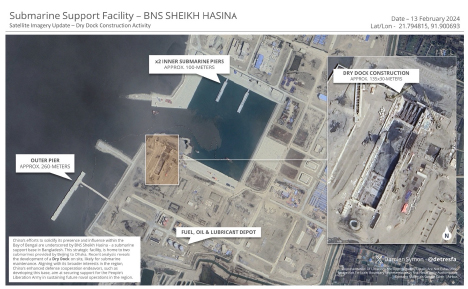
NESA Center Alumni Publication
Asanga Abeyagoonasekera – Executive Director of the South Asia Foresight Network (SAFN) under the Millennium Project in Washington, D.C. He is the author of the recent book ‘Teardrop Diplomacy (2023)’ published by Bloomsbury, and a NESA Alumni.
21 June 2024

To perpetuate Narendra Modi’s rule and the rule of his party, BJP, Hindu supremacist rhetoric was chosen as the core message for the Indian election campaign in 2024. India, an ostensibly secular state under Modi, requires a more inclusive approach, ‘bottom-up’ rather than ‘top-down’ in Modi 3.0. The hegemonic rule enforced from the top requires a reversal, with ‘checks and balances’. Often in political history, Democracy tends to self-correct when strong men manipulate it. The 2024 Indian election illustrates this point well. The most evident outcome of the Indian election is a more vigorous opposition where Indian citizens have reduced Narendra Modi’s power. Hubris, which drove Modi to aim for complete control, were the underlying reason for the decrease in votes. The Indian polity experienced dominance for some time and perhaps was tired of the top-heavy style and preferred to introduce ‘checks and balances’ to tame the central figure of attention.
At the beginning of Modi’s campaign, it was projected by many political analysts as a fait accompli where Modi’s NDA alliance would win with a clear majority. This led to Modi’s slogan of “Ab ki baar, 400 paar,” which aimed for 400 seats in 543 Lok Sabha. In the end, it was reduced to 240 seats. Many Indian scholars in the Washington Think Tank circle were also proven wrong by the election results. To achieve hegemonic dominance, Modi propagated Hindu nationalism, where Ram Mandir was seen as a symbolic achievement to push himself forward and create an omnipresence of one strong leader for Bharath. A clear indication of how voters perceived the symbolic gesture was when the BJP lost the town of Ayodhya, where the Ram Mandir was built—a misalignment of BJP’s political strategy with the voters.
The BJP campaign pushed to its limits where democratic values deteriorated when opposition political figures were arrested; minority Muslims were targeted, enforcement authorities troubled the opposition and constitutional change was also seen as a possibility. Overall, the ‘Hindutva’ campaign failed to capture a national narrative among the world’s largest population. Perhaps Modi would have achieved a better outcome on a more inclusive campaign where acceptance and tolerance of Hinduism could have been used to value diversity among religious and ethnic groups. The constant polarisation in the society was a concern for the voters, where Modi miscalculated his Hindutva campaign. Two months before the election, my analysis of democratic backsliding was published as a warning of how the domestic political trend would overspill to the neighbouring countries of India, especially the Islamic nations, distancing from India. Modi 3.0 requires a moderate posture in domestic politics to bring the neighbourhood closer to Delhi.
Another concern is Modi and the new power-sharing model in his coalition government.
Modi has never shared power as Chief Minister of Gujarat for 13 years nor as the Prime Minister from 2014 to 2024 for a decade. For the first time, he must share power with coalition partners, which is uncharted territory for a leader who exercised centralised power for many years. To start, the coalition partners will take over some key Cabinet positions. While instability will be a given condition in the power-sharing model, Modi’s leadership will require a delicate balance to sustain domestic political stability.
Political instability in the power-sharing model will impact the wider region when the region requires stability at a time of a belligerent China in India’s immediate periphery.
Foreign Policy 3.0 and India’s Neighborhood
There were many noticeable foreign policy achievements in Modi’s 1.0 and 2.0 rule from 2014-2024. Modi strengthened the partnership with the US and anchored India to the Indo-Pacific strategy as a pivotal partner. India’s ‘Multialigned foreign policy’, where ‘strategic autonomy’ was an essential ingredient to work with many nations, including Iran and Russia, is an important foreign policy manoeuvre. The Neighbourhood First and SAGAR (Security and Growth for All in the Region) initiatives are unique opportunities created by Modi, bringing prospects to India’s neighbours to work closer with India to stabilise the region. However, Modi 3.0 will be much more challenging and crucial due to increased regional Chinese forays.
The first foreign leader from the neighbourhood to arrive for Modi’s swearing-in ceremony was Prime Minister Sheikh Hasina of Bangladesh. When assessing PM Hasina’s close dealings with China in accommodating a submarine base in Bangladesh, a direct security threat for India, it is an excellent example of what India and Modi 3.0 would need to deal with in the next five years. In March, the BNS Sheikh Hasina submarine base at Pekua in Cox’s Bazar was inaugurated. The $1.21-billion Chinese-funded project is designed to berth six submarines and eight warships. According to Dr. Srikanth Kondapalli, who accurately assesses the security threat from Bangladesh’s submarine base located close to India’s Siliguri corridor, explains that ‘Dhaka is now increasingly under China’s radar for compliance with these[Chinese] demands. How New Delhi counters Beijing’s bid to draw Dhaka even deeper into its embrace remains to be seen.’ PM Hasina has intentionally welcomed the Chinese military presence threatening India’s national security. The same Chinese aggression and expansion are seen in neighbouring countries, including Maldives, Sri Lanka, Nepal, and Pakistan. The hybrid Chinese research vessel visits to Sri Lanka and Maldives and Chinese strategic infrastructure projects seen as future military base options are clear data points of the considerable pressure built up in the region. According to US Intelligence Annual Threat Assessment 2024, China ‘beyond developing its military base in Djibouti and its military facility at Ream Naval Base in Cambodia, Beijing reportedly is considering pursuing military facilities in multiple locations, including—but not limited to—Myanmar, Sri Lanka, Pakistan, Seychelles, Tanzania’ in the Indian Ocean. With the addition of Bangladesh’s Chinese Submarine base facility, there will be a considerable security threat to the region.
Sri Lankan foreign policy analyst N.G Ishini Shashipraba forecasts Modi 3.0 ‘will be a slightly muted version’. However, the opposite of Modi 3.0 is necessary for its foreign policy due to the significant height of Chinese manoeuvres in India’s immediate periphery, which requires a much louder voice and tougher stance than a ‘muted version’ to push China away from its strategic misadventures in the region. Overall, Modi 3.0 should maintain domestic political stability from its power-sharing model with democratic values at its core, a bottom-up inclusive approach, and closer ties with its democratic partners, especially the Indo-Pacific allies, to maintain stability in South Asia.
The views presented in this article are those of the speaker or author and do not necessarily represent the views of DoD or its components.